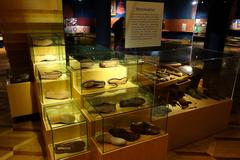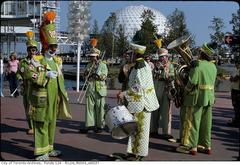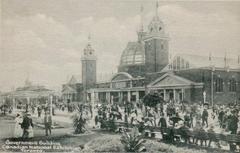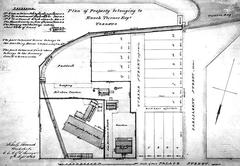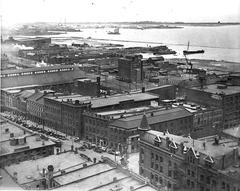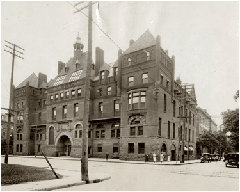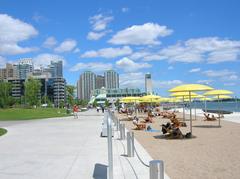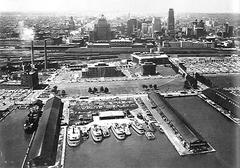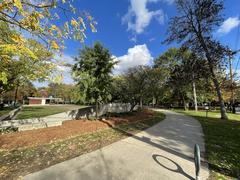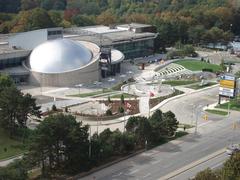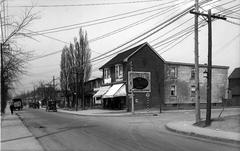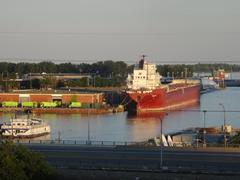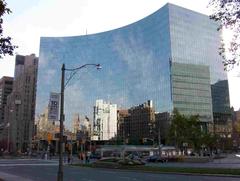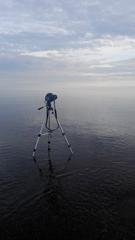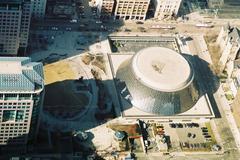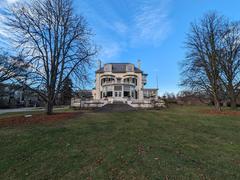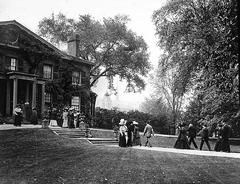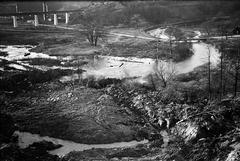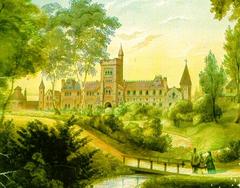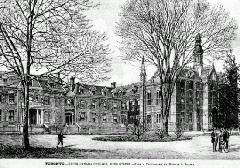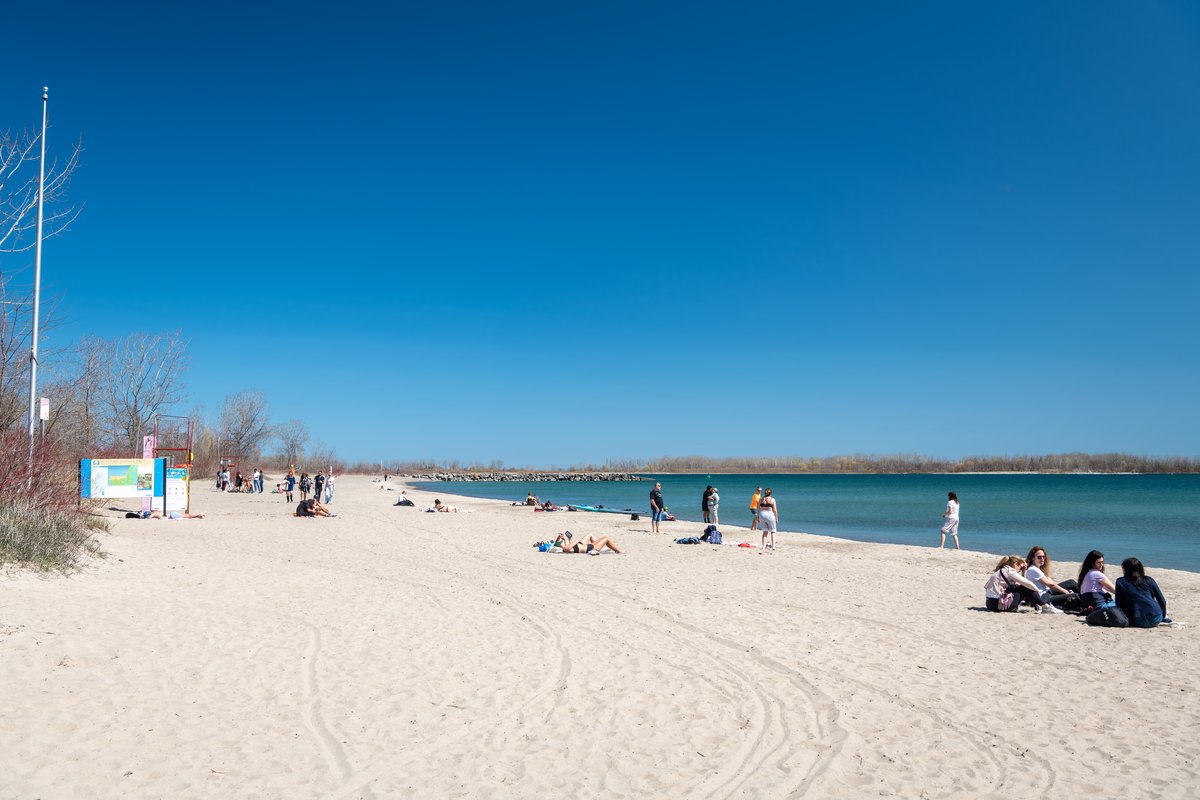
Comprehensive Guide to Visiting Ward’s Island Beach, Toronto, Canada
Date: 19/07/2024
Introduction
Ward’s Island Beach, situated within the scenic Toronto Islands, serves as a tranquil retreat and a significant cultural landmark. Its history spans thousands of years, beginning with its Indigenous roots. The Toronto Islands, originally a peninsula connected to the mainland, were formed by sediment deposits from the Scarborough Bluffs. The Mississaugas of the Credit First Nation, among other Indigenous peoples, utilized these islands for fishing, hunting, and summer retreats, calling them ‘Menecing,’ which translates to ‘On the Island’ in the Ojibwe language (Toronto Islands History).
European settlement began in the early 19th century, with John Graves Simcoe recognizing the strategic importance of the islands for defense in 1793. The mid-1800s saw the islands transform into a popular recreational destination for Toronto’s residents, marked by the construction of summer cottages and hotels. Named after David Ward, who settled there in 1830, Ward’s Island became a vibrant community with a mix of permanent residents and seasonal visitors (Toronto Island History).
The Great Toronto Fire of 1904 played a pivotal role in the development of Ward’s Island, spurring further construction on the island as residents sought safety and attractiveness away from downtown Toronto. By the early 20th century, Ward’s Island Beach had become a focal point for recreational activities, bolstered by infrastructure improvements like boardwalks and bathing stations (Toronto Harbour Commission).
Despite facing challenges in the mid-20th century, such as urban development pressures, the community’s resilience led to a landmark agreement in 1993, preserving the island’s unique character. Today, Ward’s Island Beach continues to be a cherished destination, offering a blend of natural beauty, historical intrigue, and recreational opportunities for visitors (Toronto Island Community Association).
Table of Contents
- Introduction
- History and Significance of Ward’s Island Beach, Toronto, Canada
- Visitor Information
- Nearby Attractions and Activities
- Cultural and Recreational Significance
- Environmental Conservation Efforts
- FAQ
- Conclusion
- Sources
History and Significance of Ward’s Island Beach, Toronto, Canada
Early History and Indigenous Significance
Ward’s Island, part of the Toronto Islands, has a rich history that dates back thousands of years. The Toronto Islands were originally a peninsula connected to the mainland, formed by sediment deposits from the Scarborough Bluffs. Indigenous peoples, including the Mississaugas of the Credit First Nation, used the islands for fishing, hunting, and as a summer retreat. The islands were known as “Menecing,” meaning “On the Island” in the Ojibwe language. The significance of the islands to Indigenous communities is profound, as they were a site for traditional practices and gatherings (Toronto Islands History).
European Settlement and Development
The European settlement of the Toronto Islands began in the early 19th century. In 1793, John Graves Simcoe, the first Lieutenant Governor of Upper Canada, established the town of York (now Toronto) and recognized the strategic importance of the islands for defense. By the mid-1800s, the islands became a popular recreational destination for Toronto’s residents. The construction of summer cottages and hotels transformed the islands into a bustling resort area.
Ward’s Island, named after David Ward, who settled there in 1830, became a residential community. The Ward family operated a ferry service and built several cottages, contributing to the island’s development. By the late 19th century, Ward’s Island had established itself as a vibrant community with a mix of permanent residents and seasonal visitors (Toronto Island History).
The Great Toronto Fire of 1904
The Great Toronto Fire of 1904 had a significant impact on the development of Ward’s Island. The fire destroyed much of downtown Toronto, leading to increased interest in the islands as a safe and attractive place to live and visit. The aftermath of the fire saw a surge in the construction of cottages and recreational facilities on Ward’s Island, marking the beginning of the island’s transformation into a popular summer destination.
The Establishment of Ward’s Island Beach
Ward’s Island Beach, located on the eastern side of the island, became a focal point for recreational activities. The beach’s natural beauty and serene environment attracted visitors seeking a respite from the bustling city. The establishment of the beach as a public recreational area was part of a broader effort to enhance the island’s appeal to tourists and residents alike.
In the early 20th century, the Toronto Harbour Commission undertook several projects to improve the island’s infrastructure, including the construction of boardwalks, pavilions, and bathing stations. These developments solidified Ward’s Island Beach as a premier destination for swimming, picnicking, and other leisure activities (Toronto Harbour Commission).
The Battle for Preservation
The mid-20th century brought challenges to the Ward’s Island community as urban development pressures threatened the island’s unique character. In the 1950s and 1960s, the Metropolitan Toronto government proposed plans to demolish the cottages and replace them with parkland and public facilities. This led to a prolonged battle between the residents and the government.
The residents of Ward’s Island, along with those of nearby Algonquin Island, formed the Toronto Island Community Association (TICA) to advocate for the preservation of their homes and community. After years of legal battles and negotiations, a landmark agreement was reached in 1993, allowing the residents to lease their land from the city while preserving the island’s unique character (Toronto Island Community Association).
Visitor Information
Visiting Hours and Ticket Prices
Ward’s Island Beach is accessible year-round, but the best time to visit is during the warmer months, typically from May to September. The beach is open daily from sunrise to sunset. There is no entrance fee for the beach itself, but visitors need to purchase ferry tickets to reach the island. Ferry tickets can be bought online or at the Jack Layton Ferry Terminal. For the most up-to-date ticket prices and schedules, visit the Toronto Island Park website.
Travel Tips
- Ferry Ride: The ferry ride to Ward’s Island offers stunning views of the Toronto skyline. Plan to arrive at the ferry terminal early, especially on weekends and holidays, as it can get crowded.
- Packing Essentials: Bring sunscreen, water, snacks, and a hat. There are limited food options on the island, so packing a picnic is a good idea.
- Biking: Renting a bike or bringing your own is a great way to explore the island. There are several bike rental shops near the ferry terminal.
- Weather: Check the weather forecast before your trip. A sunny day enhances the beach experience, but be prepared for sudden changes in weather.
Nearby Attractions and Activities
- Centreville Amusement Park: A family-friendly amusement park located on Centre Island, just a short walk or bike ride from Ward’s Island Beach.
- Gibraltar Point Lighthouse: One of Toronto’s oldest landmarks, offering a glimpse into the city’s maritime history.
- Franklin Children’s Garden: A whimsical garden inspired by the beloved children’s character, Franklin the Turtle, perfect for young visitors.
Cultural and Recreational Significance
Ward’s Island Beach holds a special place in Toronto’s cultural and recreational landscape. The beach is not only a popular spot for swimming and sunbathing but also a venue for various cultural events and activities. The island hosts annual events such as the Ward’s Island Fire Parade and the Toronto Island House and Garden Tour, which attract visitors from across the city and beyond.
The beach and its surroundings offer a tranquil escape from the urban environment, providing opportunities for birdwatching, kayaking, and exploring the island’s natural beauty. The Ward’s Island Association, a community organization, plays a vital role in organizing events and maintaining the island’s amenities (Ward’s Island Association).
Environmental Conservation Efforts
In recent years, there has been a growing emphasis on environmental conservation and sustainability on Ward’s Island. The island’s unique ecosystem, including its beaches, wetlands, and woodlands, is home to diverse flora and fauna. Efforts to protect and preserve these natural habitats are ongoing, with initiatives such as habitat restoration projects and educational programs aimed at raising awareness about the island’s ecological significance.
The Toronto and Region Conservation Authority (TRCA) collaborates with local organizations and volunteers to implement conservation projects and monitor the island’s environmental health. These efforts ensure that Ward’s Island Beach remains a pristine and sustainable destination for future generations (Toronto and Region Conservation Authority).
FAQ
- What are the visiting hours for Ward’s Island Beach? The beach is open daily from sunrise to sunset.
- How much are tickets to Ward’s Island Beach? There is no entrance fee for the beach, but ferry tickets are required to reach the island. Check the Toronto Island Park website for the latest ticket prices.
- Can I bring my bike to Ward’s Island? Yes, you can bring your bike on the ferry or rent one near the ferry terminal.
Conclusion
Ward’s Island Beach, with its rich history and cultural significance, continues to be a cherished destination for both residents and visitors. From its Indigenous roots to its development as a recreational haven, the beach embodies the spirit of community and resilience. The ongoing efforts to preserve its natural beauty and unique character ensure that Ward’s Island Beach will remain a beloved part of Toronto’s heritage for years to come.
Stay Up to Date
For more information, download the Audiala mobile app for updates on events and activities at Ward’s Island Beach. Follow us on social media for the latest news and travel tips.
References
- Exploring Ward’s Island Beach - History, Visitor Information, and Travel Tips. (n.d.). Retrieved from Toronto Islands History
- Discover Ward’s Island Beach - Top Attractions and Activities in Toronto. (n.d.). Retrieved from Toronto Island Park
- Essential Tips for Visiting Ward’s Island Beach in Toronto - Hours, Tickets, and More. (n.d.). Retrieved from Toronto Island Community Association
- Discover Ward’s Island Beach - Top Attractions and Activities in Toronto. (n.d.). Retrieved from Toronto Island Bicycle Rental
- Exploring Ward’s Island Beach - History, Visitor Information, and Travel Tips. (n.d.). Retrieved from Toronto Harbour Commission
- Essential Tips for Visiting Ward’s Island Beach in Toronto - Hours, Tickets, and More. (n.d.). Retrieved from Toronto and Region Conservation Authority







